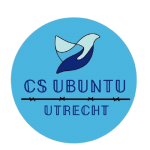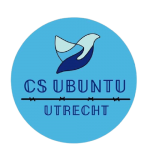Modern Slavery in the Philippines
The upcoming World Cup in Qatar shows that there are still forms of slavery in the world today. Many migrants from Asian countries have been brought to the oil state to build the stadium where the championship will take place. This happens under such appalling conditions that many of them lost their lives while working. Migrants who have survived so far live in dire and degrading conditions and do not get the chance to escape the country due to the withholding of their salary.
It is sad to realize that it takes a highly publicized world event, such as the World Cup, to draw attention to these terrible violations of human rights. Because forms of modern slavery also take place outside the spotlights of a World Cup.
One of the countries in which this is relatively common is the Philippines.
Worldwide, more and more people are crossing borders to earn a living somewhere else. But even with this global increase, the number of people leaving the Philippines is relatively high. Currently, there are about 10 million Filipinos living in other countries and on an annual basis an additional million other people leave the country to work abroad. The reason for these high numbers can be found within the immense population growth that the country has had over the past 50 years, the International Labor Office said. This has resulted in enormous pressure on the labor market, which caused a lot of poverty as a result of unemployment. In addition, there is no safety net for people without a job. Together, these conditions mean that working abroad has become an absolute necessity for many people in the Philippines.
Due to the desperation and need of many poor people in the country to get some money, it is considerably easy for human traffickers to find ‘victims’. The size of this vulnerable group has been increasing, meaning the size of these practices has also been able to increase significantly. It would now be worth billions of dollars worldwide. Moreover, these practices can be perpetuated by corrupt domestic officials. The US Trafficking in Persons (TIP) report 2020 therefore points to the degree of impunity. In 2019, 89 people were convicted for human trafficking, and in 2020 even fewer: only 73. With a population of 110 million people and an industry which size is now estimated to be extremely large, the number of convictions is suspiciously small.
The promise of better living and labour conditions to vulnerable people has resulted in the aforementioned 10 million Filipinos working abroad. The outlet accountabilityhub.com reports that after being trafficked, a substantial part of these Filipinos has been “subjected to servitude, debt bondage and forced labour”. Many types of modern slavery can be identified, all of which in its core stem from poverty and exclusion, and a desperate attempt to provide for oneself and one’s family. The most widespread form of slavery is so-called debt-bondage, in which people borrow money, often from human traffickers, and are subsequently forced to work to pay of this debt. This results in a loss of control over both “their employment conditions and the debt”.
“Modern slavery,” writes the organization 10ThousandWindows, “is a vicious cycle deeply connected to poverty and economic injustice.” The ‘vulnerability traps’ from which human traffickers profit are connected to, and perpetuated by, the effects of modern slavery. For those in the Philippines who have fallen victim to modern slavery it is very difficult to escape this ‘slavery trap’. Victims of modern slavery are often deeply traumatized, and have enjoyed very limited education, making it difficult to escape the cycle of slavery. Psychological, sexual and physical abuse are very common amongst victims. One person describes how, even after his liberation, the “physical and psychological scars” of this “unbearable abuse” remained.
One of the women who ended up in a living hell in London after being brought to London by a rich Qatari family, found a safe haven when visiting church: the Filipino Domestic Workers Association. This non-profit organization recues more than 100 female victims of modern slavery every year, giving them a place to stay and accompanying them to the police. In the UK, multiple organisations have popped up as a result of the growing number of Filipino domestic workers being subjected to unfair working hours, violence, and abuse. A safe community for exploited women in the UK is established, which provides socio-legal information, raises awareness on spotting the signs of exploitation and explains how to take action.
Organisations with the aim of addressing human trafficking have been set up in the Philippines, including the Voice of the Free (VF), which was founded in 1991. The NGO saves women at air- and seaports in cooperation with transport authorities and law enforcement, whereby trafficking is disrupted at its source. Further, survivors of labor trafficking are provided with shelter, psychological support, education, and vocational training.
Earlier this year, during the first ever Freedom for Slavery Forum on Asia, the exploitation of trafficked Asians and the impact on their communities was discussed by anti-slavery movement leaders across the continent – including the VF. Survivors of trafficking were involved in the three-day meeting as well, resulting in more awareness among participants on how to engage with victims meaningfully.
This heavy subject deserves more attention than it has been getting up till now. Do you want to know more about it? In the Resource Bank via the link you will find a beautiful documentary about the subject, several donation points and more!



